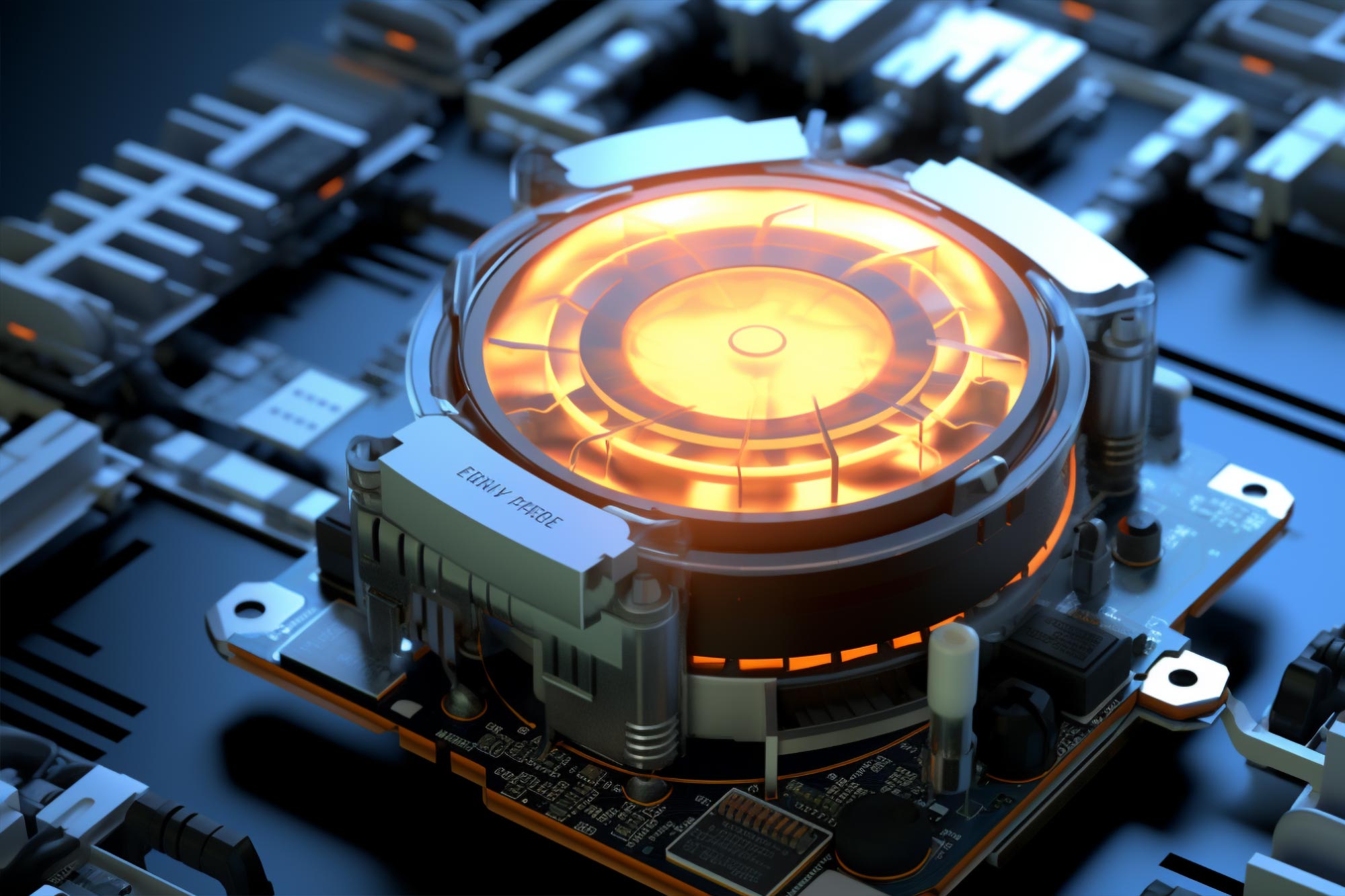Innovador dispositivo termoeléctrico de alta potencia preparado para revolucionar la refrigeración en la electrónica de gama alta


Los científicos han desarrollado un enfriador termoeléctrico con una potencia y eficiencia de enfriamiento significativamente mejoradas en comparación con las unidades comerciales existentes, lo que lo convierte en una solución potencial para la gestión del calor en la electrónica de alta gama. El dispositivo demostró un aumento del 210 % en la densidad de potencia de refrigeración y pudo mantener un coeficiente de rendimiento similar.
Investigadores de Penn State han creado un enfriador termoeléctrico que mejora significativamente la potencia de enfriamiento y la eficiencia para futuros dispositivos electrónicos de alta potencia. El dispositivo utiliza aleaciones semi-Heusler y un proceso de recocido único para producir una mayor densidad de potencia de enfriamiento y movilidad del transportador.
Enfriador termoeléctrico revolucionario para electrónica de alta gama
El desarrollo de electrónica de última generación, configurada para presentar componentes más pequeños pero más potentes, requiere soluciones de refrigeración innovadoras. Un enfriador termoeléctrico de nuevo diseño, creación de científicos de Penn State, mejora notablemente la potencia y la eficiencia de enfriamiento en comparación con las unidades termoeléctricas comerciales existentes. Los investigadores creen que este desarrollo podría ser fundamental en la gestión del calor en la próxima electrónica de alta potencia.
Bed Poudel, profesor de investigación en el Departamento de Ciencia e Ingeniería de Materiales de Penn State, expresó optimismo sobre las aplicaciones futuras del dispositivo. Él dijo: “Nuestro nuevo material puede proporcionar dispositivos termoeléctricos con una densidad de potencia de enfriamiento muy alta. Pudimos demostrar que este nuevo dispositivo no solo puede ser competitivo en términos de medidas tecnoeconómicas, sino que también puede superar a los módulos de enfriamiento termoeléctricos líderes actuales. La nueva generación de productos electrónicos se beneficiará de este desarrollo”.

Los materiales de Half-Heusler pueden proporcionar un aumento en la densidad de energía de refrigeración de los dispositivos termoeléctricos y proporcionar una solución de refrigeración para la próxima generación de electrónica de alta potencia. Crédito: Cortesía de Wenjie Li
Enfriadores Termoeléctricos: Mecanismo y Desafío
Los enfriadores termoeléctricos funcionan transfiriendo calor de un lado del dispositivo al otro mediante la aplicación de electricidad. Este proceso da como resultado un módulo con distintos lados fríos y calientes. Al colocar el lado frío en los componentes electrónicos que generan calor, como los diodos láser o los microprocesadores, se puede bombear el exceso de calor para controlar la temperatura de manera efectiva. Sin embargo, a medida que estos componentes se vuelvan más potentes, los enfriadores termoeléctricos también necesitarán expulsar más calor.
El dispositivo termoeléctrico recientemente desarrollado demostró un aumento del 210 % en la densidad de potencia de enfriamiento en comparación con el dispositivo comercial líder construido con telururo de bismuto. Además, potencialmente mantiene un coeficiente de rendimiento (COP) similar, la relación entre el enfriamiento útil y la potencia requerida, como se informa en la revista.
Innovative Half-Heusler Material in the New Device
This novel device is constructed from a compound of half-Heusler alloys, a class of materials with distinctive properties promising for energy applications like thermoelectric devices. These materials offer considerable strength, thermal stability, and efficiency.
The researchers employed a special annealing process — which manipulates how materials are heated and cooled — enabling them to alter and regulate the material’s microstructure to remove defects. This method had not been previously used to fabricate half-Heusler thermoelectric materials.
The Annealing Process and Its Effects
The annealing process also substantially increased the material’s grain size, leading to fewer grain boundaries — regions in a material where crystallite structures meet and that reduce electrical or thermal conductivity.
Wenjie Li, assistant research professor in the Department of Materials Science and Engineering at Penn State, described this transformation: “In general, half-Heusler material has a very small grain size — nano-sized grain. Through this annealing process, we can control the grain growth from the nanoscale to the microscale — a difference of three orders of magnitude.”
Reducing the grain boundaries and other defects significantly enhanced the carrier mobility of the material, influencing how electrons can move through it, which resulted in a higher power factor. This power factor is especially crucial in electronics-cooling applications as it determines the maximum cooling power density.
High Thermal Management Applications and Future Implications
Li further explained the relevance of this advancement, stating, “For instance, in laser diode cooling, a significant amount of heat is generated in a very small area, and it must be maintained at a specific temperature for the optimal performance of the device. That’s where our technology can be applied. This has a bright future for local high thermal management.”
In addition to the high power factor, the materials produced the highest average figure of merit, or efficiency, of any half-Heusler material in the temperature range of 300 to 873 degrees Kelvin (80 to 1,111 degrees Fahrenheit.) This indicates a promising strategy for optimizing half-Heusler materials for near-room-temperature thermoelectric applications.
“As a country, we are investing a lot in the CHIPS and Science Act, and one problem might be how the microelectronics can handle high-power density as they get smaller and operate at higher power,” Poudel said. “This technology may be able to address some of these challenges.”
Reference: “Half-Heusler alloys as emerging high power density thermoelectric cooling materials” by Hangtian Zhu, Wenjie Li, Amin Nozariasbmarz, Na Liu, Yu Zhang, Shashank Priya and Bed Poudel, 6 June 2023, Nature Communications.
DOI: 10.1038/s41467-023-38446-0
Also contributing were Amin Nozariasbmarz, assistant research professor and Na Liu and Yu Zhang, postdoctoral scholars, Penn State; and Hangtian Zhu, associate professor, Institute of Physics, Chinese Academy of Sciences, Beijing.
Researchers on the project were supported by grants from the Office of Defense Advanced Research Projects Agency, Office of Naval Research, U.S. Department of Energy, National Science Foundation and the Army Small Business Research Program.


:quality(70):focal(-5x-5:5x5)/cloudfront-ap-southeast-2.images.arcpublishing.com/tvnz/KKM42CQORNH2BPPGMU5ATA2VS4.jpg)


